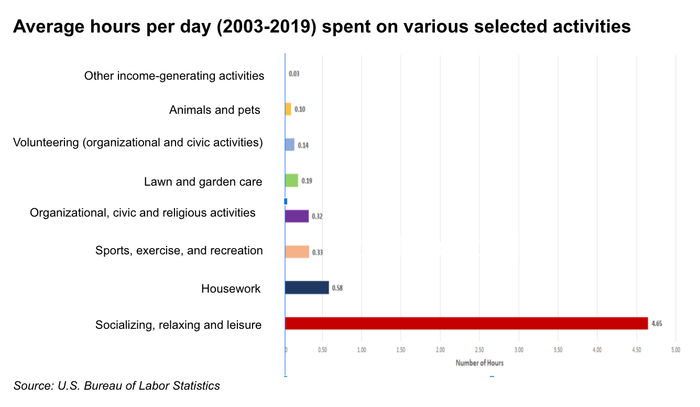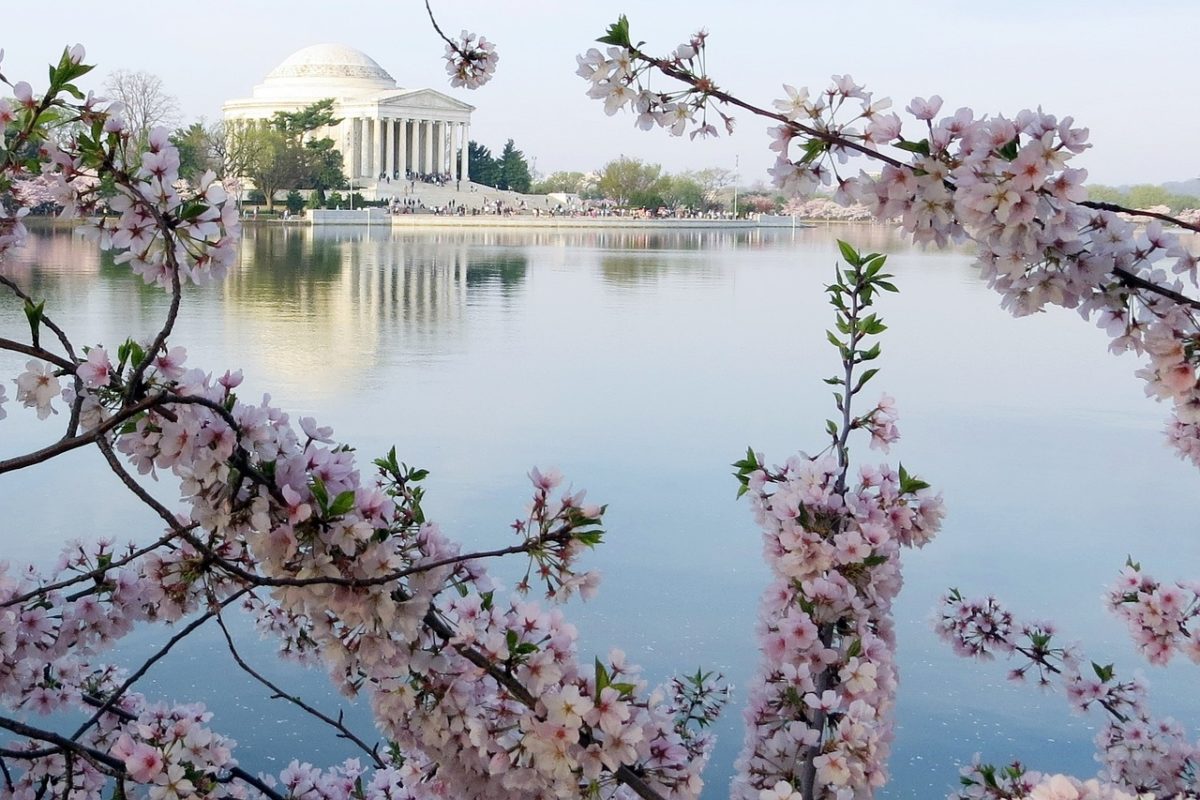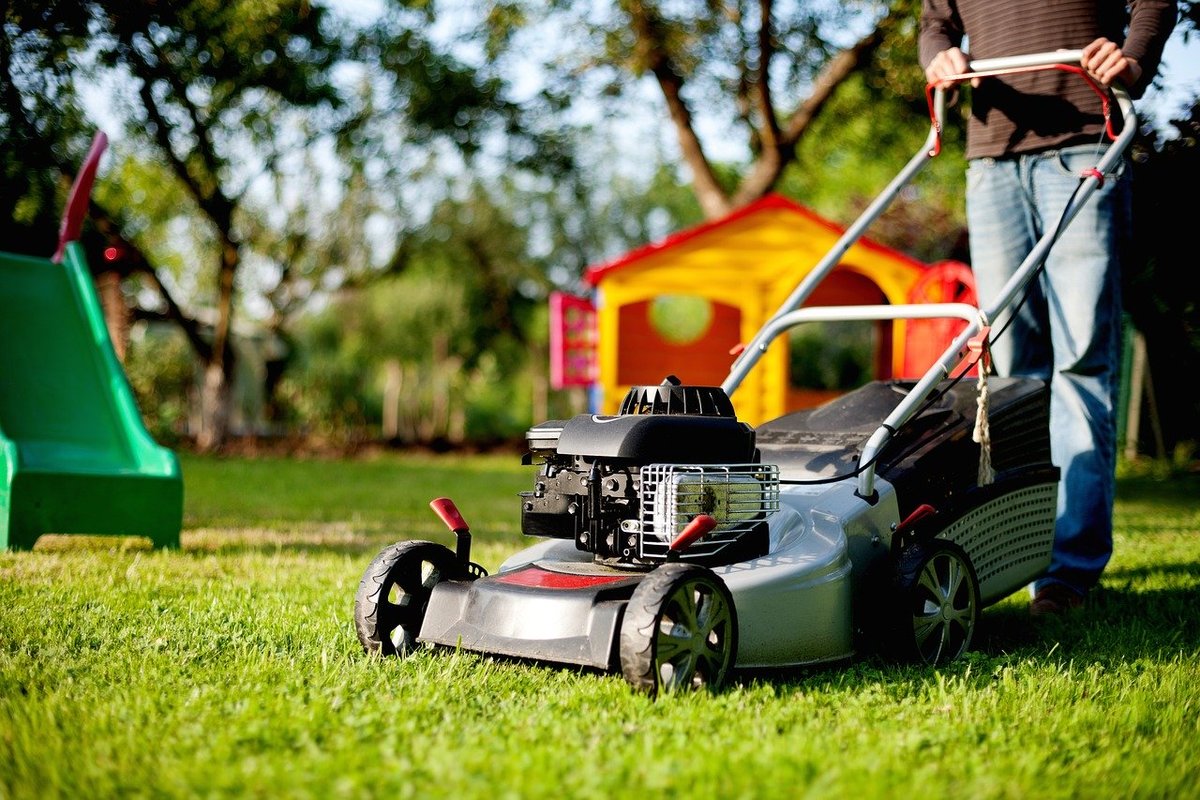
Is America experiencing a drought in lawn and garden activity? The answer appears to be yes. But a recent surge of interest in gardening and yard work may reverse that trend.
“COVID-19 has had a gigantic impact on the gardening industry,” says Dave Whitinger, executive director of the National Gardening Association.
Americans, and people all over the world, are grabbing gardening gloves and hand shovels to plant vegetables as we try to stay busy close to home.
But first, a look at the decline of lawn care and gardening activity in recent years.
Interest in lawn care and gardening work slides
The percentage of Americans who dig yard work and gardening fell to a historic low in 2019, a LawnStarter review of federal data shows.
The U.S. Bureau of Labor Statistics’ American Time Use Survey found an average 8.7% of Americans age 15 and above engaged in daily yard work and gardening in 2019.
The previous low of 8.8% occurred in 2018.
The highest share (10.3%) since the survey began in 2003 was recorded in 2005, 2006, 2007 and 2016.
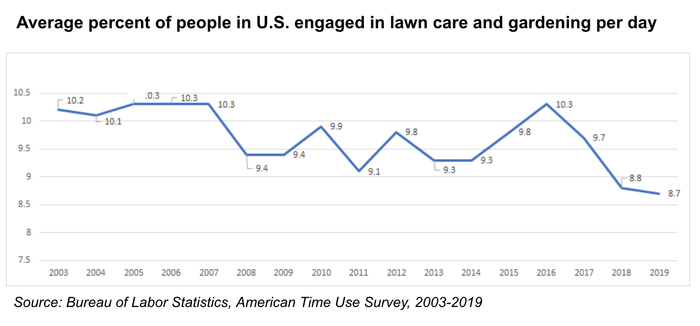
Yardwork and Gardening by the Sexes
Men the U.S. tackle more yard work and gardening than women, and the share of work done by men has shrunk since 2003. Yard work and gardening by women has been more of a roller-coaster ride yet consistently sits below men’s activity level.
In 2019, for instance, an average 10.3% of American men were mowing and tilling versus an average 7.2% of women. By comparison, the record-high share for men was 12.9% in 2007. Women set their record high of 8.9% in 2005 and 2006.
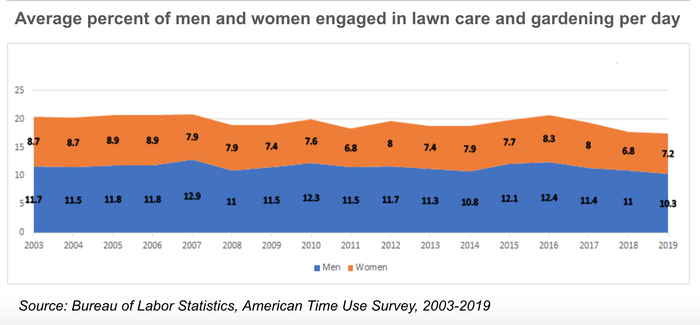
Why We Spend Less Time Gardening and Doing Yard Work
Christine Coker, associate research and extension professor of urban horticulture at Mississippi State University, cites a few reasons for the recent downturn in Americans taking on lawn care and gardening duties.
- OLDER WORKERS: People are working later in life, and these older workers don’t have a lot of time for lawn care and gardening.
- MORE RENTERS: More people have been moving into apartments and condos, so they don’t have lawns or gardens that need tending. Few want to put money into urban gardening.
- TOO COSTLY: Some people view home gardening as an unaffordable luxury. The prices of lawn mowers, gardening tools, and the sheds to keep them in add up quickly.
Leaving Lawn Care to Others
Data published in 2016 and 2017 by the National Association of Landscape Professionals shows 4 of every 10 Americans hire lawn care or landscaping professionals.
More recent data isn’t available, making it difficult to determine whether Americans have further embraced professional lawn care and landscaping.
However, Ryan Farley, co-founder and chief operating officer of LawnStarter, senses that Americans increasingly depend on lawn care and landscaping pros.
“I certainly can’t speak to the entire industry, but the majority of our customers have not hired a professional lawn service before,” Farley says. “One clear trend we see firsthand is millennials moving into their first home and having to learn about home maintenance for the first time.
“Since this is a generation that grew up with groceries, rides, dating and more only a click away, it’s natural that they’d want to outsource yard work as well,” Farley said.
Coker, too, thinks more folks are contracting out lawn care and landscaping because they want to save money on fuel and equipment, and because they consider lawn care to be more of a chore than gardening.
“You don’t get the same return on investment in terms of flowers and fruits and vegetables,” she says.
The Pandemic’s Impact on Gardening
Whitinger, of the National Gardening Association, says his group’s research shows gardening activity in 2019 was down from previous years. In 2020, though, interest in gardening in the U.S. has roughly doubled compared with last year.
Whitinger bases that estimate on an uptick in visits to gardening websites, including his organization’s Garden.org, and in sales at gardening centers.
Coker attributes the rise in gardening to the pandemic-fueled increase in working from home and homeschooling, and the decrease in away-from-home activities.
“There is now time to take on some of those outside projects that there was little time for before,” Coker says.
Market research firm IBISWorld predicts household demand for lawn and garden supplies and equipment in 2020 will outpace demand from lawn and garden pros “as consumers opt for do-it-yourself projects rather than hiring professional contractors during social-distancing and quarantine orders.”
Whitinger believes the coronavirus-prompted spike in gardening will taper off in 2021, although he thinks gardening activity will be more robust compared with pre-pandemic levels.
“New gardeners were made during COVID that will continue gardening for years to come,” he says, “while for others it was a one-time thing to help get them through the quarantine.”
Main Photo Credit: Pixabay
